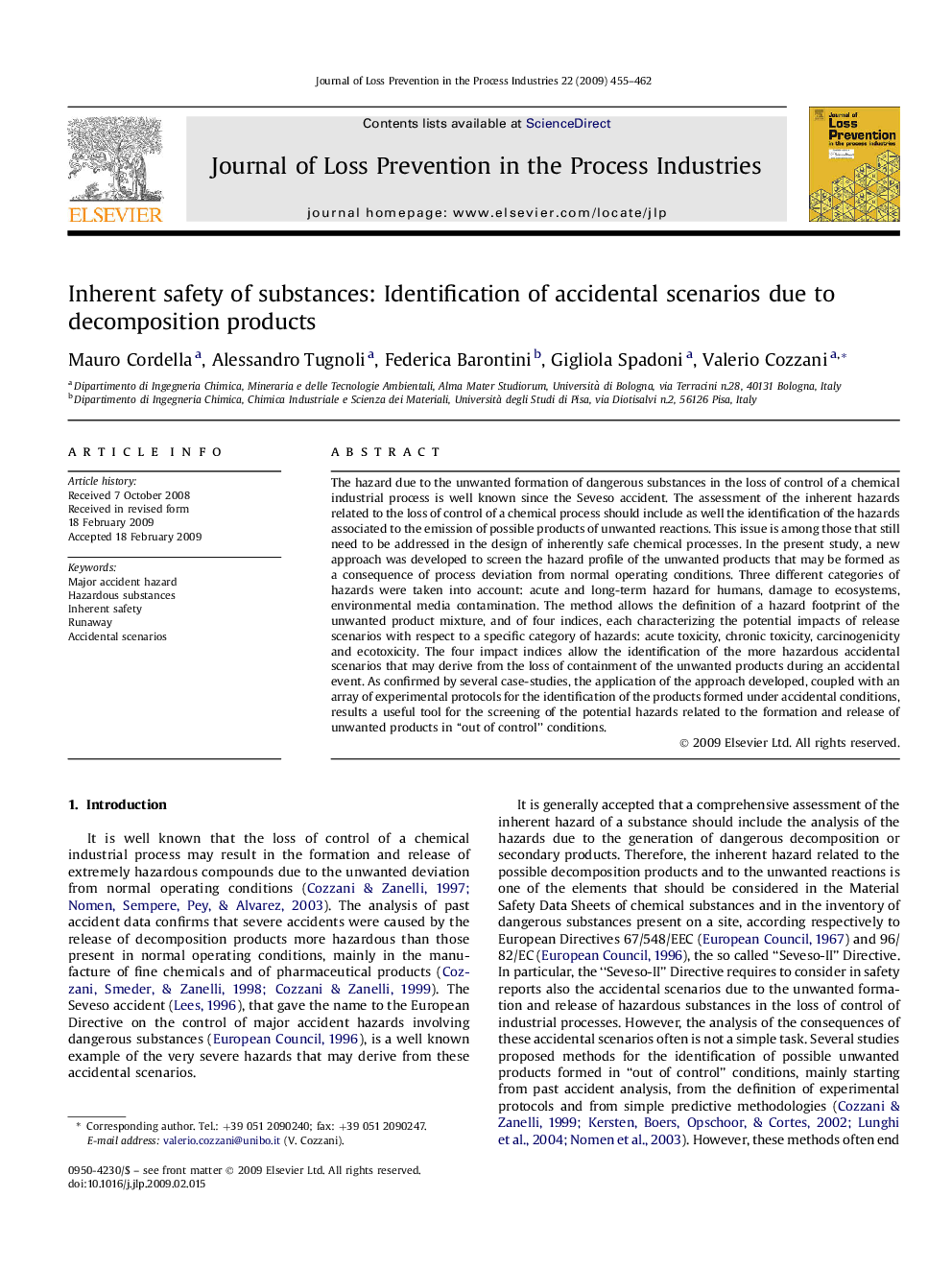| Article ID | Journal | Published Year | Pages | File Type |
|---|---|---|---|---|
| 587168 | Journal of Loss Prevention in the Process Industries | 2009 | 8 Pages |
The hazard due to the unwanted formation of dangerous substances in the loss of control of a chemical industrial process is well known since the Seveso accident. The assessment of the inherent hazards related to the loss of control of a chemical process should include as well the identification of the hazards associated to the emission of possible products of unwanted reactions. This issue is among those that still need to be addressed in the design of inherently safe chemical processes. In the present study, a new approach was developed to screen the hazard profile of the unwanted products that may be formed as a consequence of process deviation from normal operating conditions. Three different categories of hazards were taken into account: acute and long-term hazard for humans, damage to ecosystems, environmental media contamination. The method allows the definition of a hazard footprint of the unwanted product mixture, and of four indices, each characterizing the potential impacts of release scenarios with respect to a specific category of hazards: acute toxicity, chronic toxicity, carcinogenicity and ecotoxicity. The four impact indices allow the identification of the more hazardous accidental scenarios that may derive from the loss of containment of the unwanted products during an accidental event. As confirmed by several case-studies, the application of the approach developed, coupled with an array of experimental protocols for the identification of the products formed under accidental conditions, results a useful tool for the screening of the potential hazards related to the formation and release of unwanted products in “out of control” conditions.
